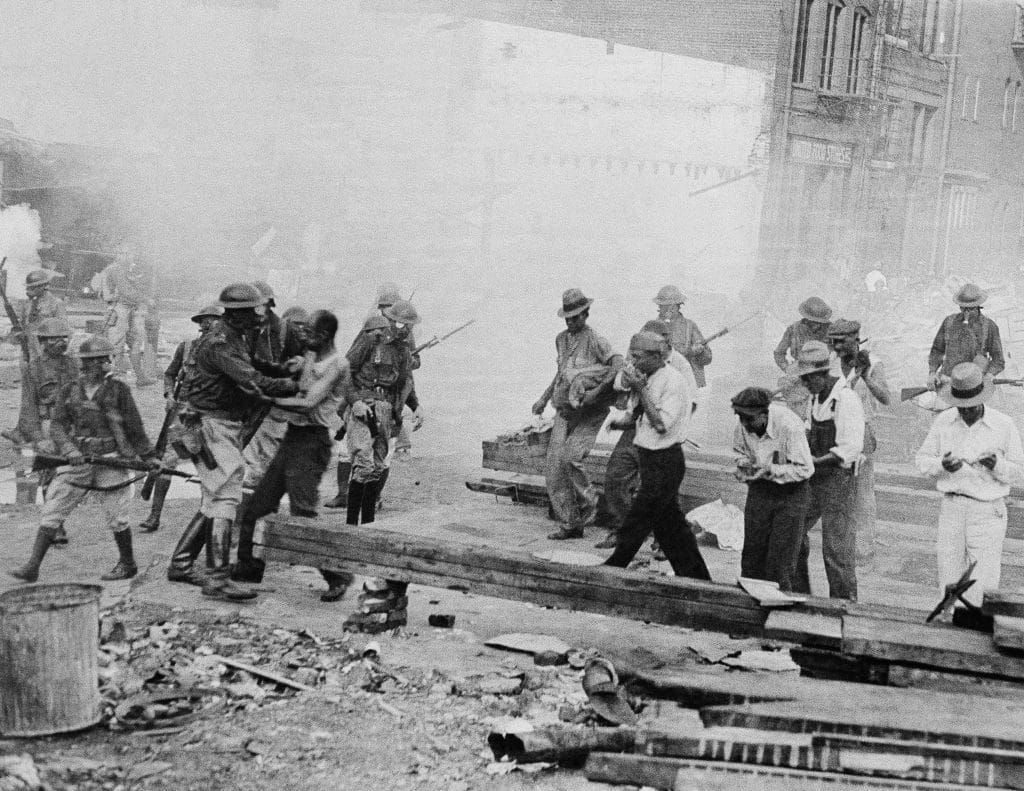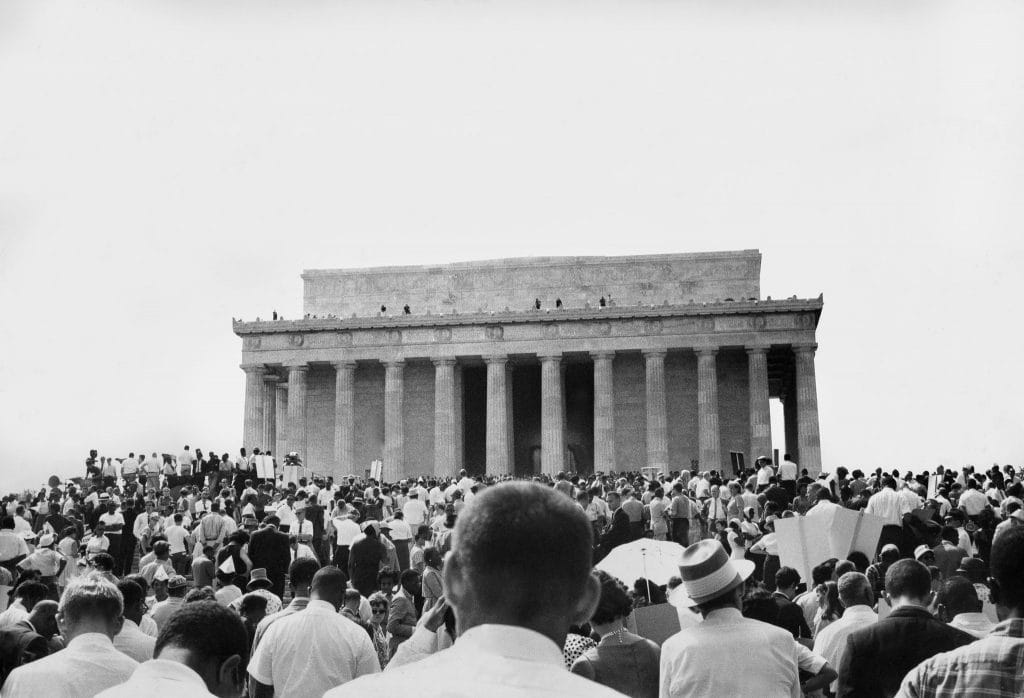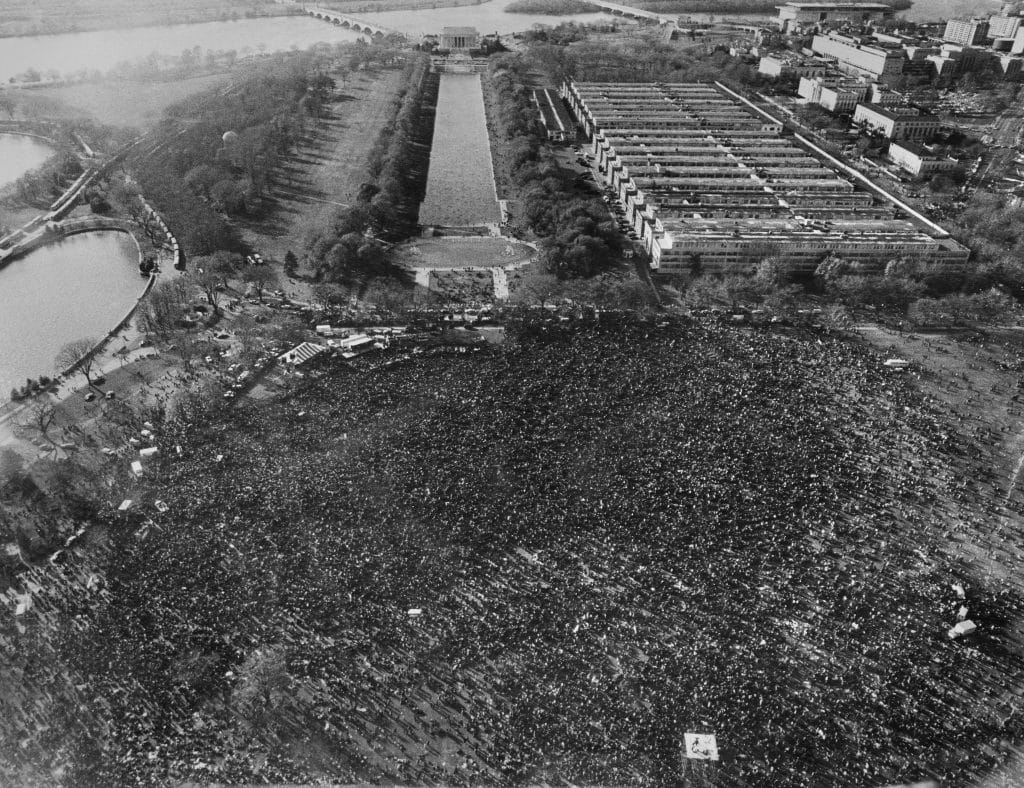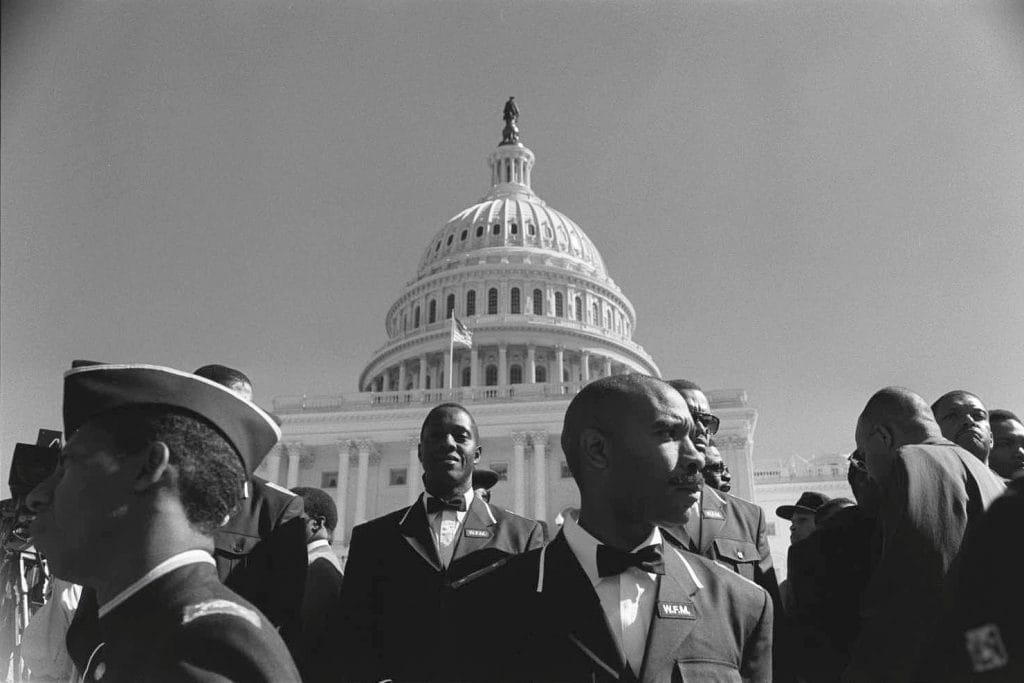
How Marches in Washington Have Shaped America
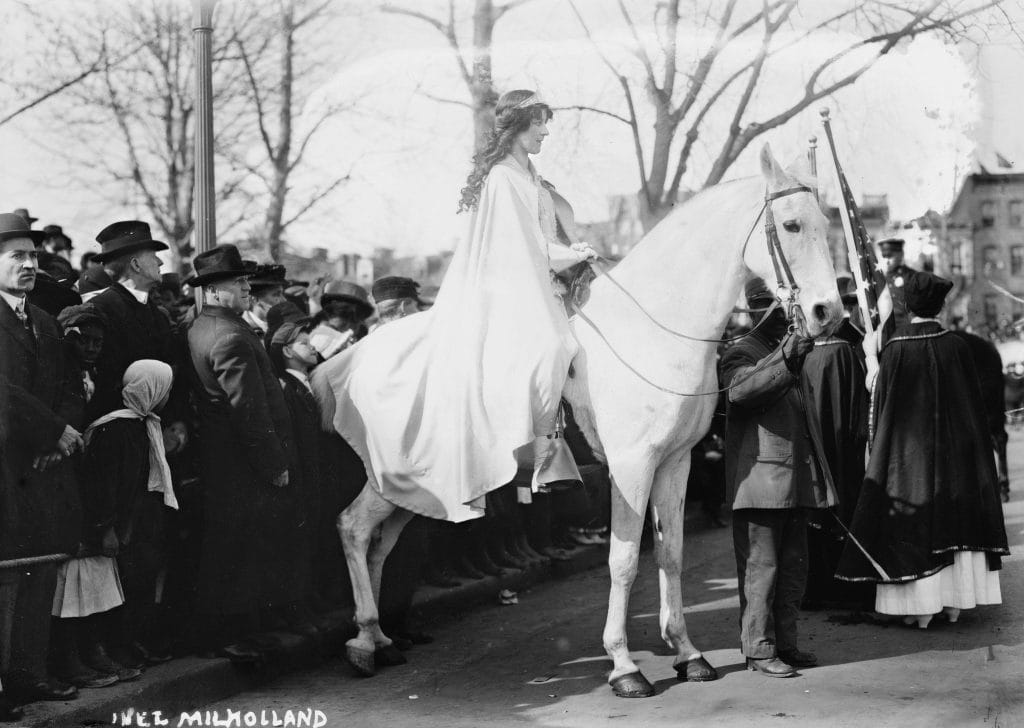 Inez Milholland at the 1913 Women’s Suffrage Procession in Washington. Credit George Grantham Bain Collection, via Library of Congress
Inez Milholland at the 1913 Women’s Suffrage Procession in Washington. Credit George Grantham Bain Collection, via Library of Congress
“One of the great weapons of a democracy.”
This was how Harry Belafonte, the performer and civil rights activist, referred to the street march in a recent interview. Mr. Belafonte played a critical role in organizing the 1963 March on Washington, which helped spur the passage of two major civil rights bills. He is also a co-chairman of the women’s march set for Saturday.
When thousands of women converge on Washington this weekend, they will join a long tradition of rallies in the capital. From the suffrage processions of the early 20th century to the Tea Party rallies of 2009, marches have drawn attention to crucial issues, occasionally resulted in violence and often prompted opposing gatherings.
Marian B. Mollin, an associate professor at Virginia Tech who studies the history of social movements, said successful marches had capitalized on symbolism and street theater, attracted a broad coalition and pushed clear policy goals.
But the test of a march’s long-term efficacy, she said, is whether it energizes participants long after they’ve gone home, sustaining them through the less exciting aspects of change. This is what she’ll be watching for in the months after Saturday’s march.
“Are they continuing to be fired up when they get back? Because there is a lot of unfun, unglamorous work to do,” she said.
We took a look back at several marches in Washington and how they changed — or didn’t change — history.
1913 Women’s Suffrage Procession
On March 3, 1913, a 26-year-old named Inez Milholland slipped on her white kid boots, threw a cape around her shoulders and climbed onto a borrowed horse to help lead what was then the largest women’s march in American history. Behind her came businesswomen in blue, writers in white, artists in pink and musicians in red, all calling for their right to vote.
Milholland organized a march on Washington that helped win passage of the 19th Amendment. Credit Edmonston, via Library of Congress
Five thousand women marched while some onlookers hurled insults and tripped them. “If my wife were where you are,” a police officer told one woman, according to this newspaper, “I’d break her head.”
President-elect Woodrow Wilson skipped the event, taking side streets to a hotel to avoid the crowds. By the end, more than 100 women were hospitalized.
Women had fought for suffrage since at least 1848. But the 1913 march kicked off a series of political actions that swayed the public and male politicians, finally pushing them to pass the 19th Amendment to the Constitution. By 1920, American women had the right to vote.
Read how The New York Times covered the march here.
1932 Bonus Army March
Army troops with gas masks and bayonets dispersed veterans demanding the payment of bonuses. Credit Associated Press
On July 28, 1932, Gen. Douglas MacArthur and Army troops surrounded a group of protesting veterans in Washington, wheeled tanks into position, prepared gas bombs and gave the former fighters 30 minutes to disperse.
The Bonus Army gathering, in which an estimated 20,000 World War I veterans demanded the payment of bonuses guaranteed under a 1924 law, is among the less-remembered marches in American history. The law had said payments would be made in 1945, but veterans reeling from the Depression wanted them earlier. The event lasted weeks, until President Herbert Hoover ordered the protesters’ removal.
Army troops shot “a heavy barrage of tear gas” at the veterans, according to The Times. Two people died during the protest.
In “The Bonus Army: An American Epic,” the authors Paul Dickson and Thomas B. Allen wrote that the march changed the nation, pushing Congress to pass the G.I. Bill, landmark legislation that allowed many veterans to go to college.
Read how The Times covered the march here.
1963 March on Washington for Jobs and Freedom
People thronged the National Mall for the civil rights rally. The Rev. Dr. Martin Luther King Jr. delivered his “I Have a Dream” speech that day. Credit Carl T. Gossett/The New York Times
The National Mall swelled with people on Aug. 28, 1963, to urge Congress to pass a historic civil rights bill. It was here that the Rev. Dr. Martin Luther King Jr. gave his “I Have a Dream” speech.
“As he arose, a great roar welled up from the crowd,” the journalist E. W. Kenworthy wrote in The Times. “When he started to speak, a hush fell.” The paper reported that more than 200,000 people had attended.
At the time, civil rights legislation was tied up in Congress, facing a filibuster by Southern lawmakers. But the march helped energize everyday people like Hazel Mangle Rivers, a black woman who took the $8 overnight bus to Washington from her home in Birmingham, Ala.
“When I get back there tomorrow I’m going to do whatever needs to be done,” she told a Times reporter after the protest. “I don’t care if it’s picketing or marching or sitting-in or what, I’m ready to do it.”
The gathering was followed by sustained activism — including a voter-registration drive in Mississippi and a march in Alabama from Selma to Montgomery — that helped pass the Civil Rights Act of 1964 and the Voting Rights Act of 1965. The march, Mr. Belafonte said recently, showed that there was “a great swatch of American opinion that was supportive of our cause.”
Read how The Times covered the march here.
1969 Moratorium to End the War in Vietnam
Protesters marched on Pennsylvania Avenue, calling for the rapid withdrawal of troops from Vietnam. Credit Associated Press
On Nov. 15, 1969, antiwar activists streamed down Pennsylvania Avenue, calling for a rapid withdrawal of troops from Vietnam. Three drummers led the procession, followed by people carrying 11 coffins bearing names of the dead. Then came rows and rows of marchers, 17 abreast, shouting, “Peace now! Peace now!” A police official estimated the crowd to be at least 250,000 strong, though others have said it was much larger.
At the time, many Americans had grown impatient with President Richard Nixon’s policy of gradual withdrawal. The White House said the president had spent the day watching college football inside.
It was the largest antiwar protest to date. But its success was less clear than the 1963 civil rights gathering. “In the aftermath of that march, Nixon escalates the war,” Professor Mollin said.
Read how The Times covered the march here.
The view from the Washington Monument as people gathered in November 1969 to protest American involvement in the Vietnam War. Credit Associated Press
1974 March for Life
The Supreme Court’s decision in Roe v. Wade, which affirmed a woman’s right to an abortion, spurred anger across the country, particularly among religious and conservative families.
A year after Roe v. Wade, on Jan. 22, 1974, thousands gathered in Washington to urge Congress to support a constitutional amendment, known as the Buckley Amendment, which would have effectively overturned the decision.
When it became clear it wouldn’t happen that year, the march’s founder, Nellie Gray, vowed to hold marches every year until it did.
This year’s march, to be held on Jan. 27, will include a particularly prominent speaker: Kellyanne Conway, the highest-ranking woman in the Trump administration.
Read how The Times covered the march here.
1987 Second National March on Washington for Lesbian and Gay Rights
A march sponsored by the National Gay Task Force in October 1979. By 1987, when a second march was held, the AIDS crisis had given urgency to the movement. Credit Dennis Cook/Associated Press
Andy Humm was a television reporter for the Gay Cable Network on Oct. 11, 1987, when an estimated 200,000 people gathered in Washington to call for AIDS research and the end of discrimination against gay people. (The event followed a 1979 march, before the AIDS crisis.)
By 1987, more than 20,000 Americans had died of AIDS and an additional 36,000 had learned they had the disease, which was deeply stigmatizing. Activists were desperate for research and care. They spread a quilt bearing names of the dead. And they wept as Mr. Humm interviewed them.
“There was no hope,” he said in a recent conversation. “We were a fairly powerless movement back then.”
The march helped mobilize and personalize the movement. Three years later, Congress passed the Ryan White Care Act, the largest federally funded program for people living with H.I.V. and AIDS. (AIDS deaths continued to climb each year until 1995.)
Read how The Times covered the march.
1995 Million Man March
Members of the Nation of Islam guarding the stage during the Million Man March in October 1995. Credit Stephen Crowley/The New York Times
Hundreds of thousands of people, most of them black men, came together on Oct. 16, 1995, for a rally organized by Louis Farrakhan, the leader of the Nation of Islam. He called on them to “accept the responsibility” to “be good husbands and fathers and builders of our community.” It was contentious — Mr. Farrakhan had been criticized previously for sexist and anti-Semitic remarks — and was attended by the poet Maya Angelou but opposed by the N.A.A.C.P.
Organizers said the event spurred 1.7 million black men to register to vote. But the march’s legacy is the subject of debate.
“Some say its core message of self-reliance and atonement left black men grappling alone with issues such as violence, drug abuse and poverty, letting politicians and institutions off the hook,” a Washington Post reporter wrote. “Others argue that the earnest assembly was a potent symbol that changed perceptions of black men and inspired the marchers to make great changes in their lives.”
In 2015, Mr. Farrakhan held a second march. Much of the discussion centered on the use of force by the police and continued discrimination. Art Scott, 59, a salesman who attended, told The Times: “There comes a time, after being pushed for so long, to push back. I think that’s the feeling in the black community right now.”
Read how The New York Times covered the march.
The 1957 Prayer Pilgrimage for Freedom drew thousands to Washington to observe the third anniversary of the Supreme Court decision outlawing school segregation. Credit George Tames/The New York Times

